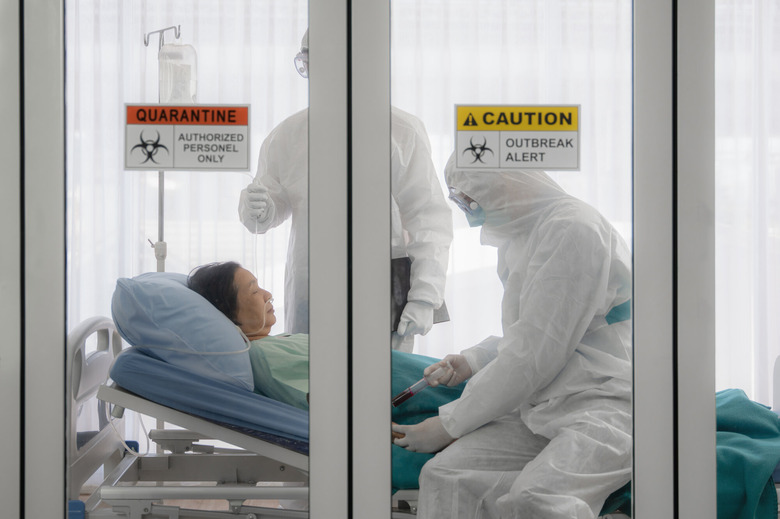CDC Recommends Seeking Emergency Help For Any Of These COVID Symptoms
- The CDC has set up an informative website containing not only a list of common coronavirus symptoms, but you can also use it to learn what COVID-19 signs suggest the need for emergency medical attention.
- This knowledge is incredibly important, especially since the US is approaching a record of 200,000 new coronavirus cases per day.
- To date, there have been more than 11 million coronavirus infections identified in the US.
With daily coronavirus cases in the US about to reach the staggeringly high mark of 200,000 — the number was above 185,000 as of the time of this writing — public health officials like White House health advisor Dr. Anthony Fauci are practically begging people not to travel, especially with the Thanksgiving holiday coming up, when multiple generations of families tend to congregate together under one roof, which is a recipe for disaster in the time of COVID-19.
"As we get into the colder weather, we should really think twice about these kind of dinner parties where you're not sure of whether the people that are in your bubble (are safe)," Dr. Fauci told the USA TODAY editorial board. "Then, you're going to start seeing these unanticipated infections related to innocent home gatherings, particularly as we head into the holiday season."
Given those facts, it's perhaps more important than ever for people not only to take the right actions to try and prevent the spread of COVID-19, such as by wearing a face mask and avoiding gatherings of people outside your household. It's also important to consult authoritative information from sources like the CDC, which has set up a page that runs through some of the common symptoms associated with the coronavirus — as well as pointing out when certain symptoms suggest the need for immediate emergency medical care.
Black Friday 2020 is here
Here's some key data from the CDC that everyone should be aware of. First, these are some basic COVID-19 symptoms to keep in mind, according to the agency: "People with COVID-19 have had a wide range of symptoms reported — ranging from mild symptoms to severe illness," the CDC's website explains. "Symptoms may appear 2-14 days after exposure to the virus. People with these symptoms may have COVID-19."
- Fever or chills
- Cough
- Shortness of breath or difficulty breathing
- Fatigue
- Muscle or body aches
- Headache
- New loss of taste or smell
- Sore throat
- Congestion or runny nose
- Nausea or vomiting
- Diarrhea
Additionally, it's important to add this list is not comprehensive. And it's also important to know when to seek emergency care for a possible COVID-19 infection. Here's what the CDC suggests along those lines, in terms of determining when emergency medical attention might be warranted.
"If someone is showing any of these signs, seek emergency medical care immediately," the agency says. They include:
- Trouble breathing
- Persistent pain or pressure in the chest
- New confusion
- Inability to wake or stay awake
- Bluish lips or face
